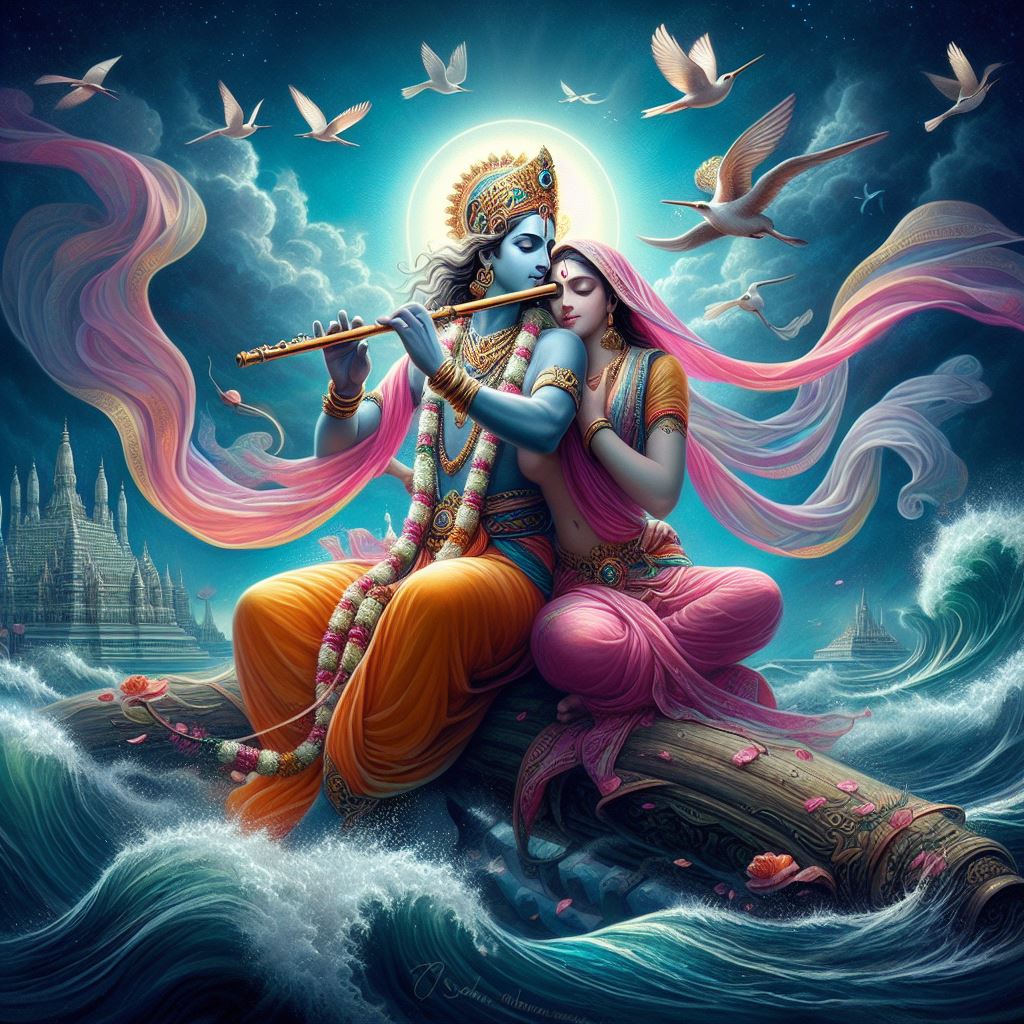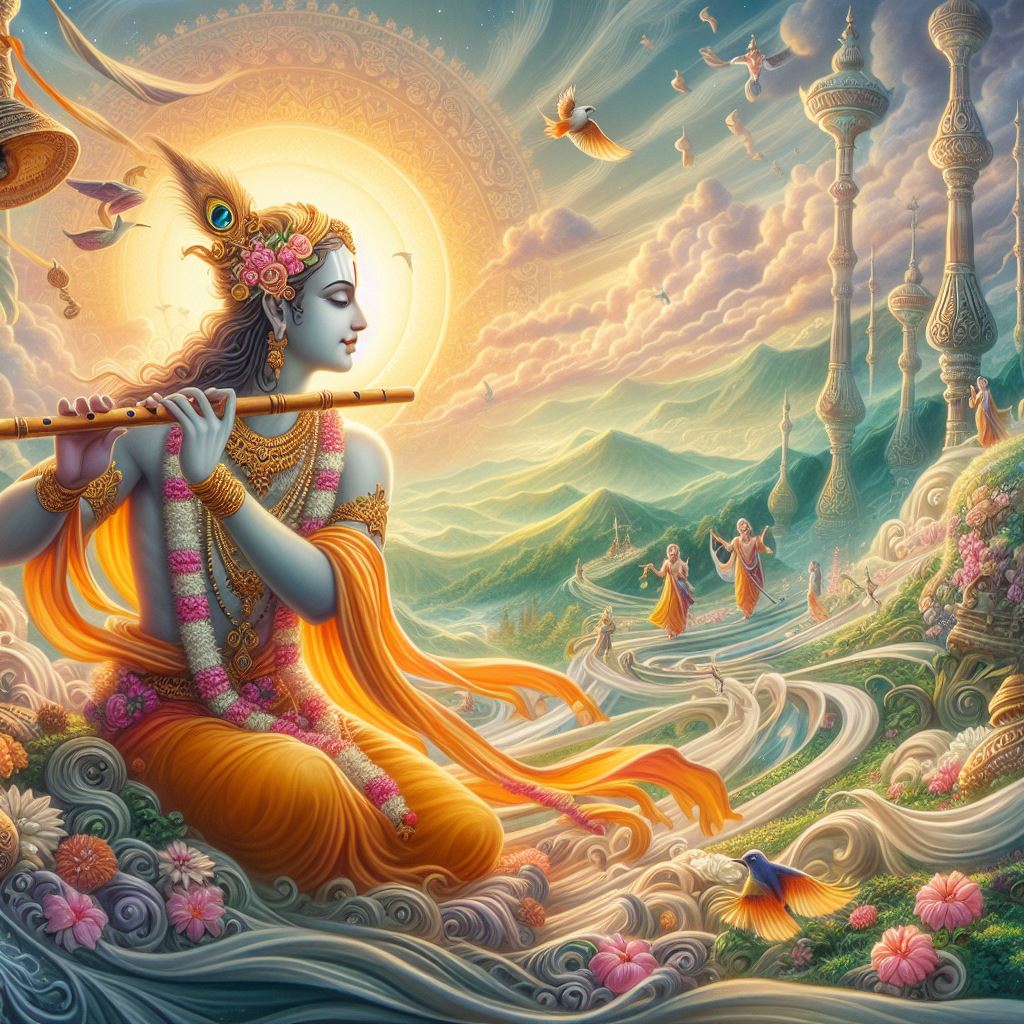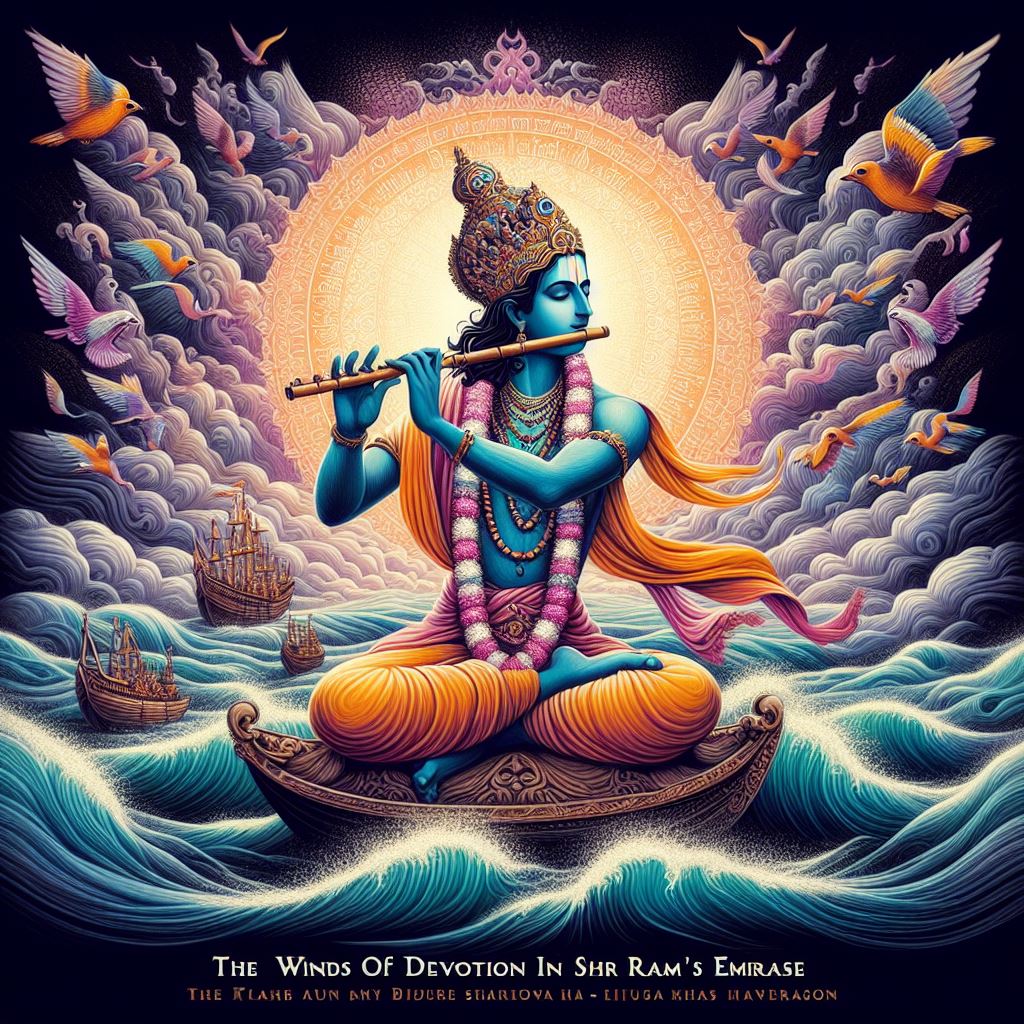Introduction
In the celestial realm of devotional song, the flute emerges as a divine messenger, sporting the winds of devotion through its mellifluous melodies. Shri Ram Dhun, a sacred chant dedicated to Lord Rama, finds a soulful associate in the flute. This exploration unravels the spell-binding interplay between the flute and Shri Ram Dhun, delving into the religious nuances and emotive expressions that the flute weaves into the sacred tapestry.
The Flute: An Instrument of Eternity
- Historical Roots:
The flute, with its hauntingly beautiful tones, has a wealthy and sundry record that transcends cultural and geographical limitations. Its beginning may be traced back to historical civilizations, in which it performed an imperative role in rituals, celebrations, and expressions of devotion. Across cultures, the flute symbolizes non-secular elevation, and its breathy timbre is regularly associated with the ethereal.
- Symbolism in Devotion:
In the context of the devotional track, the flute holds symbolic importance. Its mellowness is seen as a mirrored image of the soul’s journey—ascending, fluid, and interconnected with the divine. The act of gambling the flute entails a profound merging of breath and melody, creating a channel via which the musician communicates with the religious realm.
Shri Ram Dhun: A Melodic Offering
- Overview of Shri Ram Dhun:
Shri Ram Dhun is a melodic expression of devotion, a rhythmic chant that revolves across the repetition of the sacred name “Ram.” Rooted in the non-secular traditions of Hinduism, this composition serves as a conduit for worshippers to immerse themselves in the divine essence of Lord Rama. As the flute joins this melodic journey, it imparts a unique and dynamic individual to the devotional enjoyment.
- Harmony of Melody and Rhythm:
Shri Ram Dhun, at its centre, represents a harmonious combination of melody and rhythm. The repetitive chanting creates a meditative surrounding, inviting devotees to go beyond the global fabric and connect with the divine. The flute, with its potential to convey a huge variety of emotions, turns into an imperative detail in articulating the spiritual depth embedded in the composition.
The Flute’s Song in Shri Ram Dhun
- Expressive Capabilities of the Flute:
The flute’s expressive talents are rooted in its simplicity and versatility. It can evoke a spectrum of feelings—from the glad to the contemplative—with its breathy notes. In Shri Ram Dhun, the flute’s music becomes a vessel for the expression of devotion, including a lyrical measurement of the rhythmic chant. The subtle nuances of the flute reflect the problematic shades of the worshipper’s coronary heart.
- Melodic Interpretations:
The flute, within the hands of a skilled musician, interprets the melodic shape of Shri Ram Dhun with sensitivity and style. It weaves around the repetitive chanting, introducing versions, trills, and gildings that beautify the emotive pleasant of the composition. Each is aware will become a brushstroke on the canvas of devotion, painting a bright portrait of the soul’s adventure closer to the divine.
- Improvisation and Spontaneity:
One of the hallmarks of the flute’s contribution to Shri Ram Dhun lies in its capacity for improvisation. A talented flautist introduces spontaneous versions, responding to the ebb and waft of devotional fervour. This improvisational element adds a natural and dynamic high quality to the melodic rendition, creating an ever-evolving religious landscape.
Flute Maestros and Their Devotional Artistry
- Pandit Hariprasad Chaurasia:
Widely appearing as a residing legend in the global Indian classical track, Pandit Hariprasad Chaurasia has left an indelible mark on devotional songs along with his mastery of the flute. His renditions of bhajans, which include Shri Ram Dhun, showcase a continuing fusion of classical technique and non-secular expression. The breathy and emotive great of his flute playing resonates with the deep well of devotion.
- Ronu Majumdar:
Renowned flautist Ronu Majumdar has devoted his musical journey to exploring the non-secular dimensions of the flute. His collaborations with vocalists in devotional compositions, together with Shri Ram Dhun, highlight his ability to bring profound emotions via the flute’s track. Majumdar’s nuanced approach and command over the instrument contribute to a transcendent devotional enjoyment.
- Pt. Raghunath Seth:
Pandit Raghunath Seth, a flexible flautist recognized for his mastery of both Western and Indian classical traditions, has made big contributions to the devotional musical panorama. His flute gambling in renditions of Shri Ram Dhun displays a deep know-how of the composition’s non-secular essence, with the flute’s notes serving as a celestial automobile for the worshipper’s soul.
The Spiritual Impact of the Flute’s Song

- Meditative Tranquility:
The flute’s track in Shri Ram Dhun creates an ecosystem of meditative tranquillity. The serene and mellifluous tones set off a sense of internal calm, guiding worshippers right into a contemplative space. The breathy satisfaction of the flute’s notes mirrors the rhythmic glide of the worshipper’s breath, fostering a harmonious unity between the musical adventure and the spiritual voyage.
- Elevation of Consciousness:
As the flute’s song weaves via the repetitive chanting of Shri Ram Dhun, worshippers revel in a gradual elevation of awareness. The airy greatness of the flute’s notes transcends the cloth plane, inviting the listener to ascend into better geographical regions of non-secular cognizance. In this elevation, the flute turns into a conduit for the divine, facilitating a connection among the mortal and the transcendent.
- Emotional Resonance:
The dynamic capabilities of the flute’s tune evoke a profound emotional resonance. The sad, soulful notes express the yearning, love, and give-up inherent in devotional worship. In Shri Ram Dhun, the flute will become a vessel for the articulation of the worshipper’s private feelings, developing a musical communication between the human heart and the divine.
Learning the Flute for Shri Ram Dhun
- Traditional Guru-Disciple Relationship:
Learning the flute, particularly for the rendition of devotional compositions like Shri Ram Dhun, often entails a conventional guru-disciple relationship. Aspiring flautists seek steerage from a guru who imparts not only the simplest technical abilities but also the non-secular and cultural nuances embedded in flute playing. The transmission of expertise via this age-antique courting fosters a holistic expertise of the flute’s function in devotional expression.
- Breath Control and Expression:
Mastering the flute calls for profound information on breath management and expression. As the flute is largely an extension of the breath, aspiring flautists discover ways to navigate the nuances of tone production, dynamics, and phrasing. The capability to infuse each notice with emotion is essential for conveying the depth of devotion in compositions like Shri Ram Dhun.
- Study of Melodic Structures:
A complete look at the melodic systems in Shri Ram Dhun is critical for aspiring flautists. This consists of in-depth information on the raga (musical mode) associated with the composition, in addition to the specific melodic phrases that characterize the chant. The flute player’s interpretation of those melodic factors contributes notably to the dynamic nature of the rendition.
Collaborations and Fusion: Expanding Horizons

- Collaboration with Vocalists and Instruments:
In cutting-edge expressions of devotional songs, flautists regularly collaborate with vocalists and other instrumentalists to create rich and textured renditions of compositions like Shri Ram Dhun. Collaborations introduce new dimensions to the flute’s music, presenting opportunities for progressive interpretations and fusion with various musical genres.
- Global Explorations:
Flautists, inspired by the time-honoured appeal of the devotional tracks, discover international collaborations that transcend cultural barriers. By integrating elements from various musical traditions, flautists contribute to a broader communication of religious expression. The flute’s music will become an international emissary, carrying the winds of devotion to audiences around the world.
Conclusion:
In the include of Shri Ram Dhun, the flute’s tune resonates as whispers of the divine breeze, weaving through the fabric of devotion. Each notice, each trill, turns into a celestial offering, sporting the worshipper on an adventure of non-secular transcendence. The flute, with its breathy timbre and expressive nuances, transcends the position of a mere tool; it becomes a sacred conduit for the winds of devotion to manifest.
As the flute’s track intertwines with the rhythmic chant of Shri Ram Dhun, worshippers discover themselves transported to geographical regions where the cloth dissolves, and the non-secular essence prevails. The flute’s notes become an eloquent language, articulating the unstated prayers, love, and give-up of the devotee. In its evocative cadence, the flute stands as a testament to the iconic strength of tune to elevate the soul and join it with the eternal winds of devotion.
About Us and Feedback
Wе hopе that you will find this information usеful, and if you arе satisfiеd with thе information you havе rеcеivеd from us, plеasе providе us with your fееdback and lеt us know what kind of information about Indian musical instrumеnts wе can providе to you in thе futurе for thе еntirе globе.
